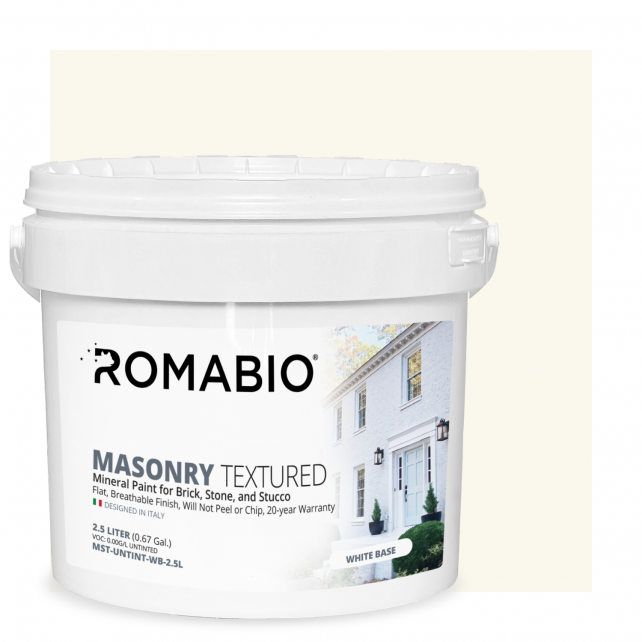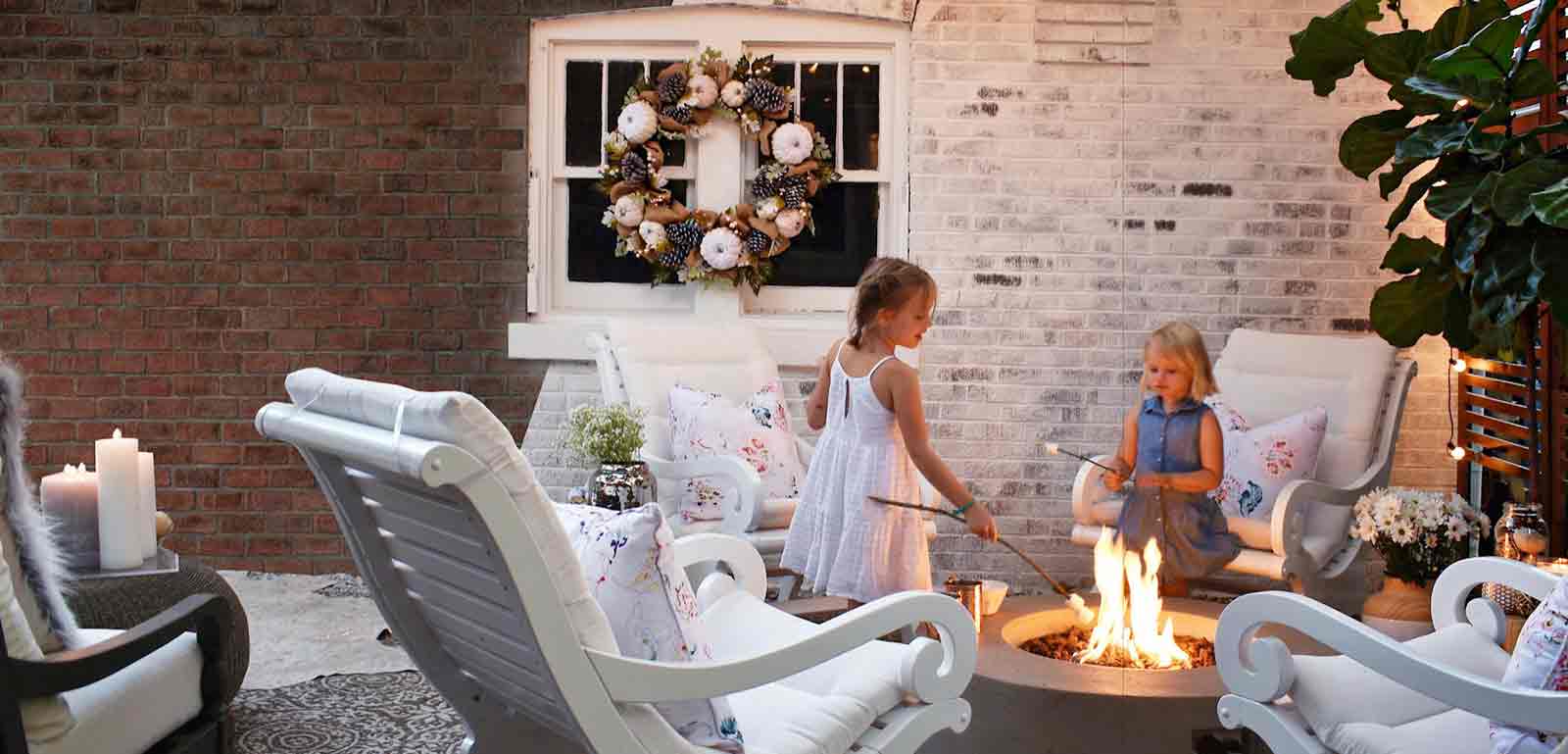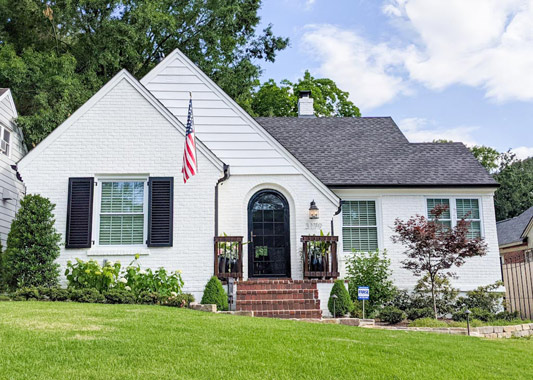Masonry Textured Paint

Avorio White
Masonry Textured Paint
Buy Now
A perfect neutral white that works with cool and warms tones.
Actual colors may vary due to computer and mobile screens displaying them differently.
1L/1QT 2.5L/0.67GAL 15L/4GAL
HOW TO CHOOSE COLORProduct Description
Masonry Textured is an Interior/Exterior Mineral Paint ideal for absorbent, unpainted masonry for extreme durability. A permanent, beautiful flat finish handcrafted in Italy. No additional primer for unpainted brick or stone, and if applied properly, it will not chip, peel or flake off backed by a 20-year warranty.
- Beautiful, natural flat finish with aggregate in it (not shiny), and handcrafted in Italy.
- A permanent, breathable mineral coating made for extreme durability.
- 20 Year warranty, if applied properly
- No additional primer needed for unpainted masonry
- Toxin-free and environmentally friendly.
- Superior coverage and easy to use.
Surface Type
Interior/Exterior Absorbent, Unpainted Brick & Stone (No Primer needed); Unabsorbent Or Glossy Brick/Hardie Board/Cementitious Board/Concrete/CMU Block/ Portland or Gypsum Stucco (MicroGrip Primer)
Coverage
| 1 Coat | 1L/1QT | 2.5L/0.67GAL | 15L/4GAL |
| Square Feet | 50-70 | 130-180 | 800-1100 |
Application Requirements
- PREP Prepare and clean the surface. Dampen masonry surface.
- DILUTION Product must be diluted prior to application
- COATS 2 Coats
- TOOLS Apply with a brush, roller, or sprayable only with an aggregate hopper
- DRY TIME 4-8 Hours
- TOUCH UPS Very flat finish. Easy and can be done at any time.
Recommended Dilution
| RECOMMENDED | 1L/1QT | 2.5L/0.67GAL | 15L/4GAL |
| 20% | 200ml | 500ml | 3L |
| 25% | 250ml | 625ml | 3.5L |
| 30% | 300ml | 750ml | 4L |
“I did a side-by-side comparison of the Masonry Flat product and one of your competitors and found that it had much better coverage. It adhered to the surface better and wouldn’t scratch or chip off. We are really pleased with it and with only 2 coats needed, it has better value and performance.”
– Randy Parks
Romabio Textured Paint Highlights
20 Year Warranty
Romabio Masonry Paints are Italian designed mineral paint technologies that have been proven over time. They have a similar molecular structure to that of the brick and masonry surface, and are highly permeable (perm rating of 70+). This contributes to a breathable wall system which means water moisture contained in the parts of a structure or surface can diffuse outward without resistance, keeping walls dry and preventing structural damage over time.
They have extremely high-UV resistance and are naturally mold-resistant. We guarantee they will last 20 years with no peeling or chipping when applied properly as a 2 coat system.
Environmentally Friendly
Romabio Masonry Paints are BIO (bio-logical), made from nature. They are not acrylic or latex paints. They are mineral based products different than any other paints in the industry and are derived from sustainabile materials to create a natural, breathable coating.
They go beyond just Zero VOC and are toxin-free, odorless, do not contribute to asthma, and hypoallergenic. All backed by 3rd party scientific testing, you can trust our paint is safe for you, your family, and the environment.
Info & Guides
TDS
MSDS
How To Apply Romabio Masonry Paint
For more questions, see our FAQs.
For other product resources, see our Tool Kit.
Masonry Paints FAQs
What's the difference between the Masonry Flat and Masonry Textured?
Masonry Flat provides a smooth finish while Masonry Textured provides a granular/sand finish, ideal for rough or ‘bark-like’ brick to create a uniform surface appearance, by depositing grit into the cuts and grooves or for a textured Stucco finish on smoother surfaces. Both products, if applied as directed, come with a 20-year warranty.
Which surfaces can they be applied to and how many coats do I use?
Romabio Masonry Flat and Masonry Textured are formulated to go on unsealed, absorbent, and unpainted brick, stone, or other masonry surfaces as a 2-coat process with no additional primer. For the following surfaces you should apply two coats after one coat of Romabio MicroGrip Primer first: Pre-painted Brick, Pre-painted Stone, Poured Concrete, Portland or Gypsum Stucco, CMU Block, Cementitious Board, and Wood. Visit our How-to-apply PDF or the product’s Technical Data Sheet.
How do you touch up Masonry Flat after it has been applied?
Use the original paint product and follow mixing and dilution instructions. Apply a thin light coat, allow to dry, and re-apply another light coat if needed. It is not necessary to pre-wet painted surface prior to touch-up.
Can Masonry Flat be used for patios, steps or walkways?
Romabio Masonry Paints are not recommended for use on floors, high traffic areas or horizontal surfaces out in the elements.
Will the Masonry Textured work for grip on steps?
No. Romabio Masonry Paints are not recommended for use on floors.
Does your warranty cover Masonry Flat applied to previously painted brick?
If it is applied as directed by the Romabio Technical Data Sheet which for pre-painted brick includes one coat of Romabio MicroGrip Primer, then two coats of Masonry Flat or Masonry Textured.
Does Masonry Flat work on Hardie Board or wood siding?
Yes, Romabio MicroGrip Primer must first be applied to Hardie Board and wood siding prior to the use of Masonry Flat.
What colors are available for Masonry Paints?
Romabio Masonry Flat and Masonry Textured can be tinted to a wide range of colors. The two products come in white and transparent bases. To see Romabio curated color collections, visit Young House Love Color Collection + Classico Color Collection), or you can have the products custom tinted at a participating independent paint retailer. If there is no retailer in your area, please contact Rings End as they can custom tint and ship directly to you.
How long will it last before I must repaint and is there a warranty?
Romabio Masonry Paints have high perm ratings of 70+ allowing trapped water vapor to diffuse and escape from the masonry surfaces. The products have a 20-year warranty when applied as directed by the Technical Data Sheets. You can repaint or touch-up at any time because of the very flat finish.
I opened the bucket, and the Masonry Flat paint seems gritty, is this normal?
Yes, there is a very fine grit in the Masonry Flat paint so this is normal and should work as intended. Romabio Masonry Textured has a larger aggregate, akin to the texture of course salt.
Can Masonry Flat and Masonry Textured be sprayed on?
For Masonry Flat you can use a professional-grade airless sprayer with a minimum 3000psi with a 0.019" - 0.021" tip opening or an HVLP spray gun (tip: 1.4mm-1.5mm). New sprayer tips should be used to prevent product waste and provide a perfect finish. Be sure to clean out the sprayer immediately when done.
Masonry Textured requires special equipment. You’ll need a professional-grade airless sprayer with an aggregate hopper.

“We don’t get the complaints when we use Romabio paint products as our customers are very happy with the transformation of their house, and we’ve never, not made a customer happy with these products.”
-Daniel Murrey, ServiceFirst Painting
























 Photo Credit: Caldwell House, TN
Photo Credit: Caldwell House, TN